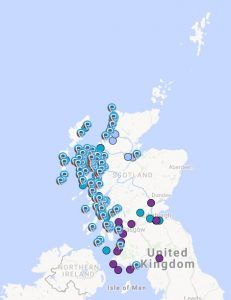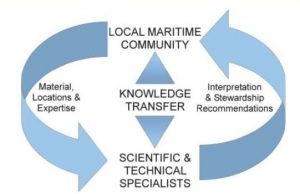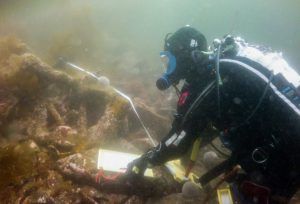Among this year’s winners for the highly regarded EU Prize for Cultural Heritage/ Europa Nostra Award 2017 is the SAMPHIRE project – a community led marine heritage project taking place across the west coast of Scotland. From a total of 202 applications submitted by organisations from 39 countries across Europe, SAMPHIRE was announced as the category winner for the Education, Training and Awareness-raising category.

The EU Prize for Cultural Heritage/ Europa Nostra Award 2017
The Europa Nostra Awards were originally instigated in 1978 to recognise outstanding heritage conservation initiatives. In 2002, these Awards evolved to become the European Union Prize for Cultural Heritage/ Europa Nostra Awards. Supported by European public and private partners, and run by Europa Nostra, the Awards are considered Europe’s most prestigious heritage prize.
As an organisation, Europa Nostra is a well-established pan-European federation that aims to represent citizens’ organisations which protect, promote and lobby for cultural heritage. It comprises members from over 40 countries.
Winning project – SAMPHIRE
What is the aim of the project?
Project SAMPHIRE enables local communities to work with professional underwater archaeologists to support the identification, investigation and appreciation of Scotland’s marine heritage. By working together with communities, the project aims to “reinforce a shared sense of stewardship of those underwater archaeological sites”.
Where is the project taking place?

Map with over 100 marine heritage sites. (Wessex Archaeology, 2016)
Since the project was instigated three years ago, the team have worked with communities to identify and examine over 100 maritime heritage sites throughout the west coast of Scotland, which were previously unidentified. This included 150 years of lost vessels including cargo ships, an iron naval yacht – and even a paddle steamer lost in 1867 with great loss of life.
Who is running it?
The project is principally a collaboration between Wessex Coastal & Marine and Flinders University Maritime Archaeology Department in South Australia. Funding was innovatively obtained through both crowd-sourcing and also funding provided by The Crown Estate through the Stewardship Fund.
What has been achieved?
Project SAMPHIRE was originally driven by the paucity of knowledge on the location and nature of our marine heritage resources and the difficulty of conducting comprehensive surveys of the seabed. There was also some urgency to record “living knowledge held by local community members” of these resources.
In view of this, collaborative research was undertaken between Scottish, Spanish and Australian researchers to explore the potential for community engagement to enhance and develop knowledge of marine heritage sites.

Infographic illustrating the process of exchange between those involved in the SAMPHIRE project. (SAMPHIRE, 2013)
In practice, the project team first asked local communities to highlight potential locations of marine archaeological interest. The potential of each site was then scoped through holding face-to-face meetings with harbour managers, scallop divers, diving clubs, fishers and others, as well as with local residents. Following this, the most promising locations were examined by professional and volunteer archaeological divers to verify the information from the interviews.

Divers explore Iris wreck in North West Skye. (Wessex Archaeology, 2014)
Judges were impressed by the innovative techniques used to promote a sense of stewardship of these heritage discoveries amongst the communities. For example, community members were encouraged to select their own ‘local champion’. As reported by Europa Nostra, the project also provided participants with “the skills and confidence to participate in a major archaeological project which may otherwise have been viewed as being in the inaccessible domain of specialists”. Moreover, the community were also permitted to be involved in the fieldwork and desk-based research, as well as other aspects of practical project work.
Overall, the jury believed that the project was highly successful in creating a long-term impact and instigating best practice approaches to inspire and raise awareness of heritage sites. It is also helped to improve fishing practices in proximity to marine heritage sites. The SAMPHIRE methodology could also be used as a model for future projects across Europe.
More information
Full details of the project findings, including annual detailed accounts of the discoveries made, can be viewed at: http://blogs.wessexarch.co.uk/samphire/downloads/. Additionally, data gathered during the project will archived with Historic Environment Scotland and made available through their Canmore website: https://canmore.org.uk
